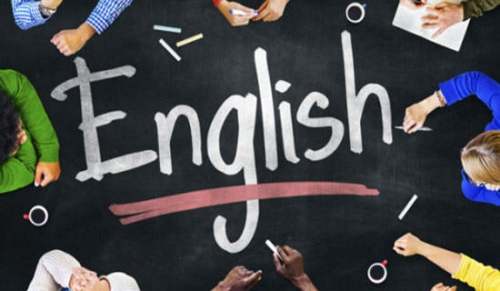- 相关推荐
《学习和玩耍》英语作文及译文
无论是在学校还是在社会中,大家或多或少都会接触过作文吧,作文是经过人的思想考虑和语言组织,通过文字来表达一个主题意义的记叙方法。你所见过的作文是什么样的呢?以下是小编整理的《学习和玩耍》英语作文及译文,欢迎阅读与收藏。

《学习和玩耍》英语作文及译文 1
Everyone has to study, going to school occupies a lot of peoples time, before they go to work, they need to study in the school. In China, students work very hard, for they have a lot of pressure, they have many exams to take, so students are immerged into the books all the time. While studying all the time is not good for students, they need to go out of the classroom and take in some fresh air. The outside world is beautiful, they can play with their friends, watching movies, taking a break now and then. Play can make study better, students can have new idea, so they wont stuck in the unsolved problem. Study needs to combine with play
译文:
每个人都要学习,上学占据了很多人的时间,在他们工作前,他们需要在学校上学。在中国,学生很努力学习,因为他们有很大的压力,他们有很多的考试,因 此学生整天埋头苦读。然而整天学习并不利于学生,他们需要走出教室,呼吸新鲜的'空气。外面的世界很美,他们可以和朋友玩,看看电影,时而不时的休息下。玩 耍能让学习更有效率,学生可以有新的注意,这样他们就不会被无法解决的难题困住。学习要和玩耍结合起来。
《学习和玩耍》英语作文及译文 2
English Version
In the debate between learning and playing, many perceive them as opposing forces—one symbolizing discipline, the other representing distraction. Yet this binary view overlooks their profound interdependence.
Learning, the cornerstone of intellectual growth, equips us with tools to decode the world. A child mastering multiplication tables or grammar rules is not merely memorizing symbols, but constructing mental frameworks for future problem-solving. However, rigid didactic methods often stifle curiosity. This is where play steps in as the catalyst.
Play, often dismissed as "unproductive," is in fact the brains laboratory. When children build Lego castles or stage puppet shows, they engage in unstructured creativity, testing hypotheses ("Will this tower stand if I add a third floor?") and refining social skills through collaborative negotiation. Neuroscientists confirm that such experiences activate the prefrontal cortex, enhancing executive functions like focus and impulse control—qualities that directly benefit academic performance.
The most effective education systems recognize this synergy. Finlands renowned school model allocates 15 minutes of outdoor play for every 45 minutes of instruction. Children return to classrooms with renewed concentration, their brains primed for deeper learning. Similarly, Montessori classrooms integrate "work cycles" with uninterrupted play, fostering intrinsic motivation.
Rather than framing learning and playing as adversaries, we should view them as dancers in a waltz. When structured knowledge acquisition intertwines with creative exploration, the result is not just academic success, but a lifelong passion for discovery. After all, the child who learns fractions through baking cookies will retain the concept longer than one who merely copies equations from a blackboard.
Chinese Translation
在学习与玩耍的争论中,许多人将二者视为对立面——前者象征自律,后者代表分心。然而,这种非此即彼的视角忽视了它们深刻的共生关系。
学习是智力成长的基石,赋予我们解码世界的工具。孩子掌握乘法表或语法规则,并非单纯记忆符号,而是在构建未来解决问题的`思维框架。但刻板的说教往往扼杀好奇心,此时玩耍便成为催化剂。
玩耍常被贬为“无用”,实则是大脑的实验室。当孩子搭建乐高城堡或表演木偶剧时,他们在无结构的创造中检验假设(“加盖第三层塔会倒吗?”),并通过协作谈判磨练社交能力。神经科学家证实,这类体验能激活前额叶皮层,提升专注力与冲动控制等执行功能——这些能力直接反哺学业表现。
先进的教育体系早已洞察此道。芬兰著名的教育模式规定,每45分钟授课后需安排15分钟户外玩耍,孩子带着焕新的专注力回归课堂,大脑已为深度学习做好准备。蒙台梭利教室亦将“工作周期”与自由玩耍结合,激发内在驱动力。
我们不应将学习与玩耍视为对手,而应视其为共舞的舞伴。当结构化知识获取与创造性探索交织,结果不仅是学业成功,更是终身探索的热情。毕竟,通过烘焙饼干学习分数的孩子,会比单纯抄写黑板方程的孩子记忆更持久。
《学习和玩耍》英语作文及译文 3
English Version
The tension between learning and playing mirrors humanitys eternal quest for balance. In education, this tension manifests as the age-old dilemma: should we prioritize academic rigor or nurture holistic growth? The answer lies not in choosing sides, but in orchestrating a dynamic equilibrium.
Learning, particularly in early childhood, must transcend rote memorization. A 2023 OECD study revealed that students who engage in project-based learning—where they design ecosystem models or compose original poetry—show 37% higher critical thinking scores than those confined to textbooks. Such "active learning" mirrors plays investigative spirit, turning classrooms into laboratories of curiosity.
Conversely, play is not mere frivolity. The Association for Childhood Education International defines play as "the language of childhood," a universal medium through which children express emotions, test boundaries, and construct identity. When a child pretends to be a doctor during recess, they are rehearsing empathy and problem-solving—skills that textbooks cannot teach.
The secret to harmonizing these forces lies in intentional design. Japanese kindergartens implement "enrichment zones" where children rotate between academic tasks (counting seeds) and imaginative play (operating a pretend flower shop). Teachers observe that this structure reduces burnout by 42% compared to traditional schedules. Similarly, Singapores "Learning Through Play" initiative uses board games to teach probability, with students showing 25% better retention than those in lecture-based classes.
Ultimately, education should emulate natures balance. Just as trees require both sunlight (structured learning) and rain (unstructured exploration) to thrive, human development demands both intellectual rigor and creative freedom. The ideal classroom is not a battleground between textbooks and toys, but a garden where both can take root.
Chinese Translation
学习与玩耍的张力,折射着人类对平衡的永恒追求。在教育领域,这种张力表现为古老的两难:是优先学术严谨性,还是培育全面发展?答案不在于非此即彼,而在于编织动态平衡。
儿童期的`学习必须超越死记硬背。2023年经合组织(OECD)研究显示,参与项目式学习(如设计生态系统模型、创作诗歌)的学生,批判性思维得分比仅依赖教科书者高37%。这类“主动学习”延续了玩耍的探索精神,将课堂变为好奇心的实验室。
反之,玩耍绝非轻浮之举。国际儿童教育协会将其定义为“童年的语言”,是儿童表达情感、试探边界、构建身份的通用媒介。课间扮演医生的儿童,实则在排练共情与问题解决——这些能力远非教科书所能传授。
调和二者的秘诀在于刻意设计。日本幼儿园设置“探索区”,让孩子交替进行学术任务(数种子)与想象游戏(经营虚拟花店)。教师观察发现,相比传统课表,该模式使倦怠率降低42%。新加坡“玩中学”计划则用桌游教授概率,学生知识留存率比讲授式教学高25%。
教育的终极目标应效法自然平衡。正如树木既需阳光(结构化学习)又需雨水(无结构探索)才能茁壮,人类发展同样需要理性严谨与创意自由。理想的课堂并非教科书与玩具的战场,而是二者共生的花园。
【《学习和玩耍》英语作文及译文】相关文章:
我和秋天玩耍09-05
游戏玩耍作文实用06-17
关于经典的英语作文及译文(通用15篇)04-10
关于旅游的英语作文及译文(精选13篇)10-18
我的村庄英语作文及译文(精选5篇)02-20
关于偶像的英语作文及译文(精选15篇)11-18
在雪中玩耍的作文(精选51篇)07-08
关于手机的英语作文附译文(精选24篇)11-06